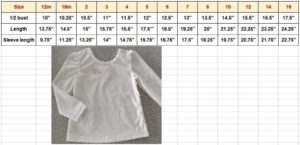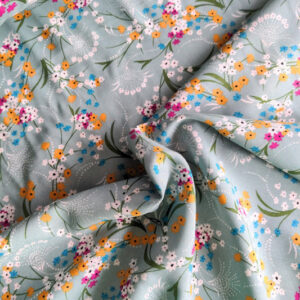Ivory Taffeta vs. Ivory Bamboo: Can These Fabrics Be Mixed?
In the world of fashion and sewing, fabric compatibility is crucial for achieving the best results. When mixing fabrics like ivory taffeta and ivory bamboo, understanding their properties can make or break your project. This article will explore whether these two textiles can be combined successfully, offering insights into their characteristics, benefits, and potential challenges.
Compatibility Analysis
Yes, ivory taffeta and ivory bamboo can be mixed, but with some considerations. Taffeta, known for its crisp texture and sheen, contrasts with bamboo’s soft, breathable nature. Their compatibility depends on factors such as texture, weight, stretch, care requirements, and durability.
- Texture: Taffeta’s smooth, slightly stiff texture complements bamboo’s soft, drapey feel, creating visual interest.
- Weight: Taffeta is generally heavier, which can add structure to bamboo’s lightweight nature.
- Stretch: Bamboo has more natural stretch, while taffeta is more rigid, requiring careful pattern selection.
- Care Requirements: Bamboo is more delicate, needing gentle washing, whereas taffeta can withstand more robust cleaning methods.
- Durability: Taffeta is durable but prone to snags, while bamboo is strong yet may pill over time.
Fabric Properties Comparison Table
| Property | Ivory Taffeta | Ivory Bamboo |
|---|---|---|
| Fiber Content | Synthetic (often) | Natural (bamboo) |
| Weight and Thickness | Medium to heavy | Light to medium |
| Breathability | Low | High |
| Stretch and Elasticity | Low | Moderate |
| Wrinkle Resistance | Moderate | High |
| Care Instructions | Dry clean or gentle wash | Gentle wash, air dry |
| Durability | High | Moderate |
Benefits of Mixing These Fabrics
- Enhanced Texture and Visual Interest: The combination of taffeta’s sheen with bamboo’s matte finish creates a rich, layered look.
- Improved Comfort and Performance: Bamboo adds softness and breathability, making garments more comfortable.
- Better Drape and Movement: Taffeta provides structure, while bamboo allows fluid movement.
- Cost-Effectiveness: Bamboo is often more affordable, balancing the cost of pricier taffeta.
- Seasonal Versatility: This blend can work for both warm and cool climates, depending on the weight.
- Design Possibilities: Mixing these fabrics allows for creative designs in both fashion and home decor.
Potential Challenges
- Different Shrinkage Rates: Pre-wash both fabrics to minimize this issue.
- Conflicting Care Requirements: Opt for the gentlest care method suitable for both.
- Texture Clash or Pilling: Use a fabric shaver for pilling and avoid high-friction areas.
- Seam Puckering: Use appropriate interfacing and stabilize seams.
- Color Bleeding or Fading: Test for colorfastness before combining.
Sewing & Styling Tips
- Sewing Techniques: Use a straight stitch with a slight zigzag for flexibility.
- Needle and Thread: Use a universal needle size 70/10 and polyester thread.
- Interfacing and Stabilizer: Use lightweight interfacing to support taffeta.
- Seam Finishing: French seams or serging work well to prevent fraying.
- Pattern Selection: Choose patterns with simple lines to showcase the fabric contrast.
- Styling Ideas: Pair a taffeta skirt with a bamboo top for a chic look or use them in home decor for textured curtains.
Care & Maintenance Guide
- Washing Instructions: Use cold water and a gentle cycle for both fabrics.
- Drying Recommendations: Air dry to prevent shrinkage and maintain fabric integrity.
- Ironing and Steaming: Use a low heat setting with a pressing cloth to avoid damage.
- Stain Removal: Treat stains promptly with mild detergent.
- Long-Term Care: Store garments in a cool, dry place to prevent deterioration.
FAQ Section
-
Can you wash ivory taffeta and ivory bamboo together?
Yes, but use a gentle cycle and cold water to protect both fabrics. -
Will ivory taffeta shrink more than ivory bamboo?
Taffeta is less prone to shrinkage, but pre-washing both is advised. -
What needle size should I use for sewing these fabrics together?
A universal needle size 70/10 is recommended. -
Can you mix these fabrics in one garment?
Yes, they can be mixed for garments, balancing structure and comfort. -
How do you prevent seam puckering?
Use appropriate interfacing and stabilize seams with a walking foot. -
Is it okay to mix these fabrics for upholstery?
Yes, but consider durability and care requirements for high-use items. -
What’s the best way to finish seams with these fabrics?
French seams or serging are ideal to prevent fraying.
By understanding the unique properties and potential challenges of ivory taffeta and ivory bamboo, you can create beautiful, functional pieces that highlight the best of both worlds. Whether in fashion or home decor, this fabric pairing offers endless possibilities for creativity and innovation.


Leave a Reply